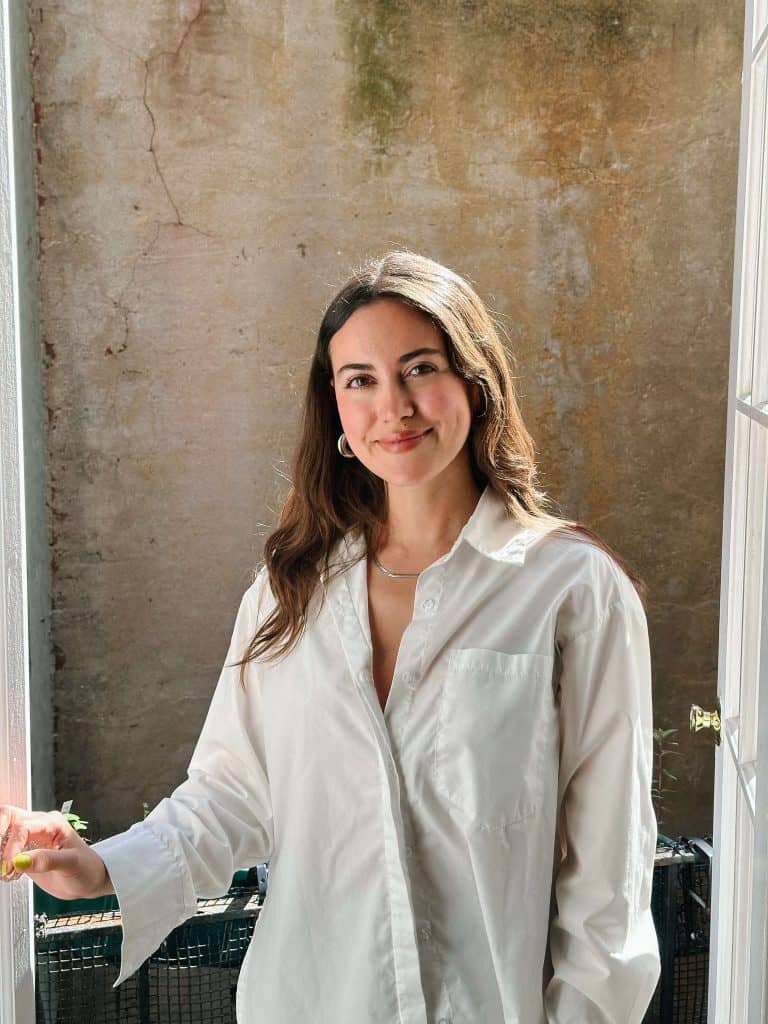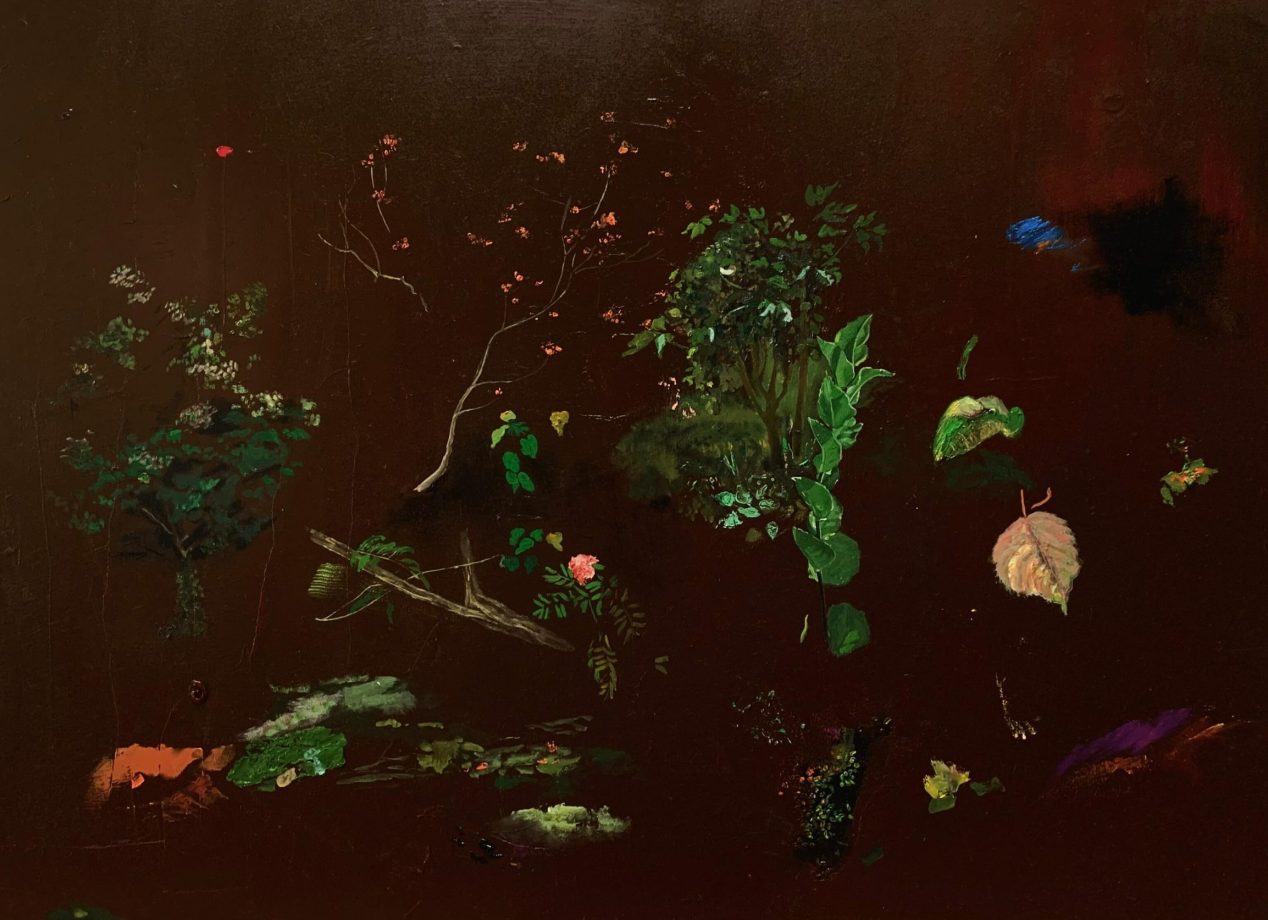Amanda Garcia is the founder of Ala Projects, a project aimed at stewarding emerging Latin American art and artists and modernizing the ways in which the art world operates. Amanda speaks on her experience with The Gavel, a business pitch competition at Sotheby’s Institute of Art, and what we can expect from Ala Projects’ inaugural gallery in New York this spring.
 What motivated you to pursue an MA at Sotheby’s Institute?
What motivated you to pursue an MA at Sotheby’s Institute?
I’ve always been torn between the social sciences and art, which is what led me to study both majors as an undergraduate at The New School. I then undertook a Master's in urban governance and policy making and worked in the sustainability sector in France for about three years after graduating. Throughout that time, I continued to take supplementary coursework to stay in touch with the art world, and I never fully parted ways with my passion for it.
Ala Projects started as a note on my phone in 2018. I kept coming back to it over the years and finally decided to enroll on the MA Art Business program at Sotheby’s Institute to officially take the plunge and give my business idea a chance. After perusing the different MA options and speaking to various alumni, it became clear that the Institute’s practical and professional approach was the right choice for my plans.
Looking back, how did the MA Art Business program at Sotheby’s Institute equip you with the tools and knowledge to navigate the art industry?
The Institute’s hands-on approach enabled me to understand how the art world works. I experienced the importance of our coursework once I began working in the gallery space. The program equipped me with the skills to conduct research, value pieces, prepare comparable reports, market pieces and artists to strengthen their reach, understand the various art world subsectors and how they work, and, of course, become a strong curator.
The Enterprise Studio offers Master’s students training and support for new business ventures, culminating in a start-up pitch competition, The Gavel. What were some of the most valuable lessons or skills you gained from the Enterprise Studio experience?
The Enterprise Studio connected me with my Gavel presentation partner, who was an incredible asset in preparing the presentation and initial pitch for Ala Projects. The sessions with faculty also provided great insights and tips on how best to prepare for the pitch. The competition not only taught me the types of questions to anticipate from investors and stakeholders, but it seeded the organizational skills that come from preparing a business plan over so many months. We received great feedback and advice from industry experts, which gave me the validation and drive I needed to continue to pursue this idea after graduating.
It's been a year since you pitched your business idea at The Gavel. Could you provide some background on the concept behind Ala Projects and walk us through the journey of bringing your vision to life over the past year?
Ala Projects was born to correct the historical oversight faced by Latin American and diaspora artists while simultaneously increasing buyer accessibility in the art world. It is meant to provide a transparent, artist-centric platform for emerging Latin American talent and connect them with entry-level and seasoned collectors.
Over the past year, I’ve been focused on getting Ala Projects ready for its launch while also working full-time as a gallery coordinator. I initially worked with a freelance branding specialist to create a consumer-facing brand, from its visuals to its tone of voice. Simultaneously, I began meeting with accountants and lawyers to understand the ins-and-outs of filing a business, creating artist contracts, etc.
Once the business was filed and the brand was ready, I began scouting and contacting artists I wanted to work with. Receiving such a positive reaction from artists and potential vendors made me realize how tangible the project was becoming.
In March 2024, I quit my job and began working on Ala Projects full-time. Since then, I have brought a marketing lead on board to get all website, social media, and marketing operations running. Meanwhile, I’ve focused on managing artist relations, planning and finding sponsors for our launch event, and doing outreach to collectors, curators, and press. Our first exhibit, Act I: The Showcase will debut in New york City from May 18 - 25.
How did The Gavel prepare you for the challenges and realities of launching an art gallery?
The Gavel helped me understand the financial side of my project and provided a valuable lesson in presenting and preparing pitches to prospective clients, collectors, partners, sponsors, artists, and investors.
Your inaugural exhibition, Act I: The Showcase, is set to open this month. What can visitors expect to experience, and what themes or narratives will this exhibition explore?
Act I: The Showcase is meant to be exactly that – a showcase of what Ala Projects has to offer. The exhibition will give a sneak peek into the type of artists and art that we will be highlighting in terms of style, movement, format, medium, concept, and more. The exhibit features seven artists and 32 pieces total, with about 10 to 12 pieces that will be exhibited in the physical pop-up space on May 18 - 25. All works will also be exhibited and shoppable online through June 29.
The exhibition will explore identity and what it means for a person to construct their identity away from their home country, as well as within it, when they don’t fit within the identity normalized by the patriarchy. Act I: The Showcase will also touch on architecture and the urban environment, memory and movement, and socioeconomic analyses of a given region or country.
Visitors will experience an exhibit opening but with a twist – the space will double as a celebration by and for the Latin American community with sounds by Colombian Miami-based Laguna, food by Canaima Food Truck, and drinks by Lalo Tequila.
Ala Projects aims to highlight Latin American art and create community for Latin American artists, curators, and entrepreneurs. What is your overarching vision and goals for the gallery and its impact over the next five years?
My vision for Ala Project’s impact is quite expansive – the project is between a gallery and a collective, and I would like to keep it that way for the years to come. I plan on maintaining close relationships with my artists and sharing diverse opportunities with them, even long after their exhibits with Ala have ended, such as residencies and exhibits in other galleries and museums. I plan on nurturing this community of artists and hope that many friendships are born from it. I would one day like to offer a part-time residency program as part of this project somewhere in Latin America.
Prior to building a residency program, I would like to partner with Latin American arts and cultural institutions to create a fellowship or competition where art students submit pieces to a committee from their institution. If selected, the committee can recommend artists to be featured in Ala exhibits throughout the US.
Looking back, what advice would you give to students considering participating in the Enterprise Studio program and competing in The Gavel competition?
I would encourage participants to take advantage of all the resources the program and competition offer, from practice to advisor sessions. This is a good time to find strong mentors that will believe in and strengthen your pitch. I would recommend participants pay attention to their fellow students’ presentations, as they will all bring a different perspective and approach to their pitches that can be useful for future conversations.
Most importantly, have fun, be open to feedback, and remember that you don’t have to have the perfect pitch to participate! The Gavel is an enriching experience that will leave you feeling more prepared to take your business idea to the next level.
